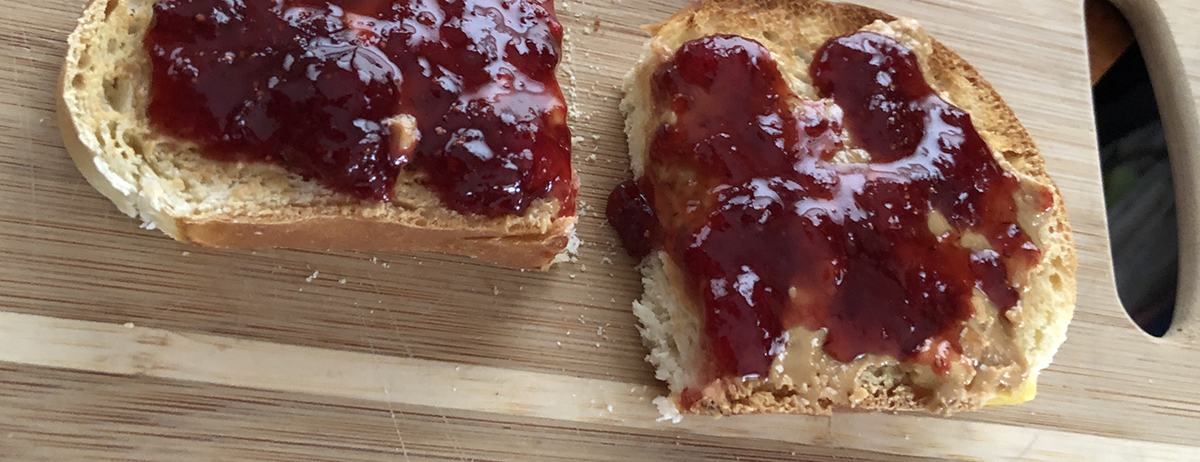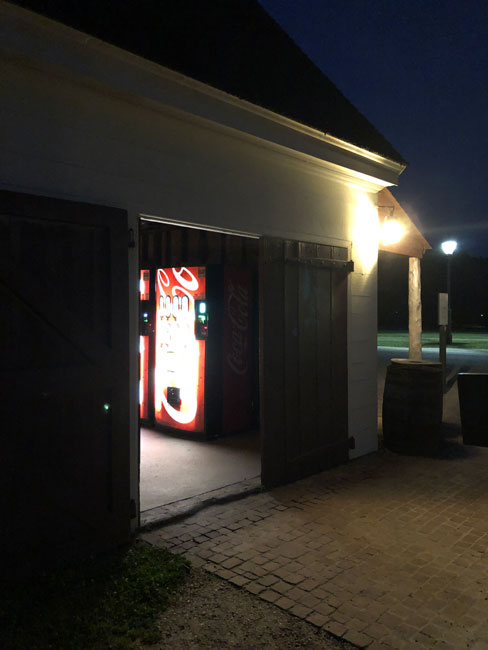
Ye Olde Coke Machine
When I worked at Pleasant Company, we used to talk about the history biz – that is, the type of work necessary to maintain and promote and serve customers at historic tourist attractions like Old World Wisconsin, or Independence Hall, or Deadwood, or Colonial Williamsburg. The work we did. Trying to figure out what a 9-year old girl’s life would’ve been like in 1774, or 1904, or 1864, and then presenting an interpreted view of that research, that would be accessible for tourists but still relatively historically accurate. Like Addy, a Black girl born into slavery who has escaped to the North, whose possessions cost more than most working white people had at the time.
We just spent two days at Colonial Williamsburg, and I think there was some of the best and the worst of the history biz there. Like the woman at the carpenter’s shop telling a group of kids that everyone was poor in the 18th century, and you had to make everything from scratch, yourself. Umm, right – ignoring the fact that one of the things that brought a lot of people to America was the ability to quickly accrue wealth. And the lumber, and especially the tools in that carpenter shop are wealth. Or the woman who was spinning who said, “Boys had to spin, too, it wasn’t just for girls.”
We had a good docent to go through the governor’s mansion – she knew what she was talking about, and didn’t try to make awkward comparisons between the 18th and 21st centuries.
We also ate very well, although when we stopped at Chowning’s Tavern on our first walk around town, the drinks we got in plastic cups and plastic wrapped cookies didn’t make me feel particularly taken back in time.
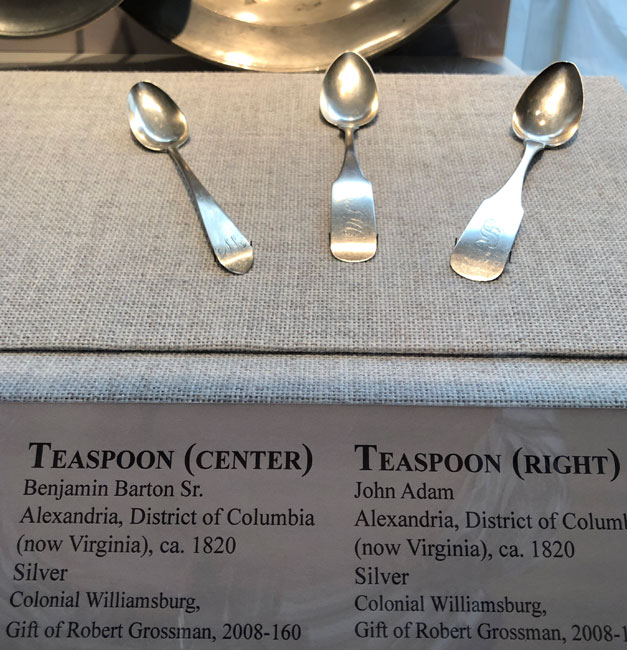
By the time we got to the DeWitt Wallace Decorative Arts Museum on our 2nd day, I had not been served anything with spoons like this
Tuesday night we ate at Fat Canary, American, not historical, with a huge wine cellar – the canary being a name for wine in barrels brought from the Canary Islands in Colonial times – and a cheese shop on the other side of the cellar, where we got sandwiches for the drive back to Alexandria, on Thursday. We started with some crab and corn soup that was lovely and creamy. We split a romaine salad. Mark had a pork chop, that came with a goat cheese souffle that was probably the best part. I had salmon on top of lentils, little cubes of pickled gold and red beets, and it also had goat cheese, and some pesto on the plate. I drank an elderflower cocktail and a glass of red wine from the Pacific Northwest, a red blend that I thought would be good with salmon, that was an extremely generous pour, I’d bet 8+ oz. rather than the usual 4-6.
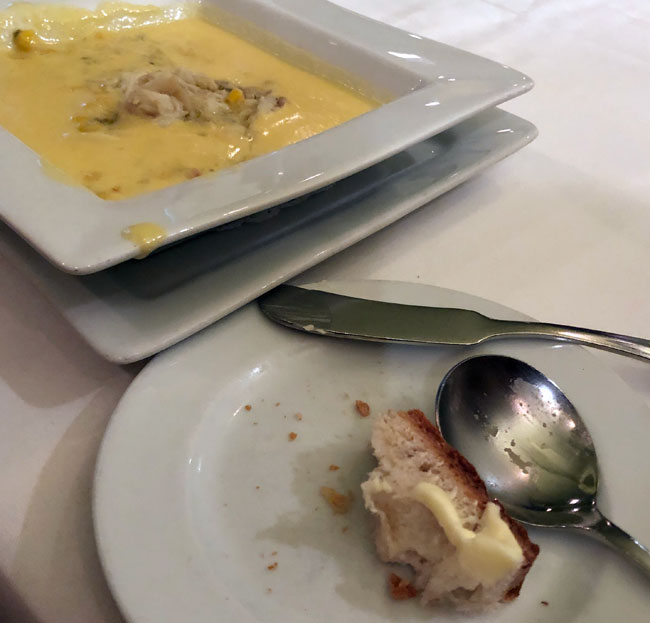
Crab and corn soup and bread and butter at Fat Canary
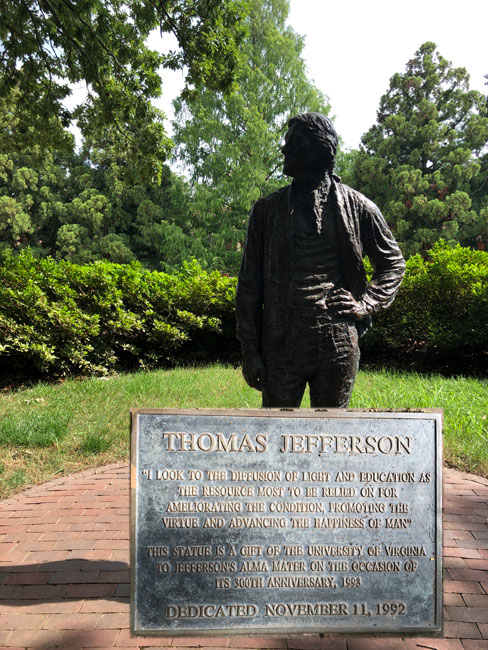
TJ, with quote, at William & Mary
Wednesday night we ate at Christiana Campbell’s Tavern, that had more of a prix fixe menu; each meal included soup, salad, main course, and dessert. I opted for the cup of corn & bacon chowder, and Mark had the cream of lump crab soup, which was a little too thick and fishy for my taste. They also brought us a loaf of warm sweet potato bread. We both had the “Christiana’s Favorite Salat”, described as “wedge Boston butter lettuce” but was more like a large leaf – which was fine, given the amount of food we were served, and it did have the “Roasted Cherry Tomatoes, Golden Raisins, Sunflower Seeds, Carrots, Peppercorn Buttermilk Dressing” as promised. I had the Glouster dinner – fried chicken – and Mark had the Watermans – crab cakes. For dessert we had warm berry crumble with vanilla ice cream, and raspberry sorbet. We managed a few spoonfuls and walked back to the hotel, by a slightly longer route, that did not stop us from lapsing into food coma as soon as we got there.
Here are some pictures:
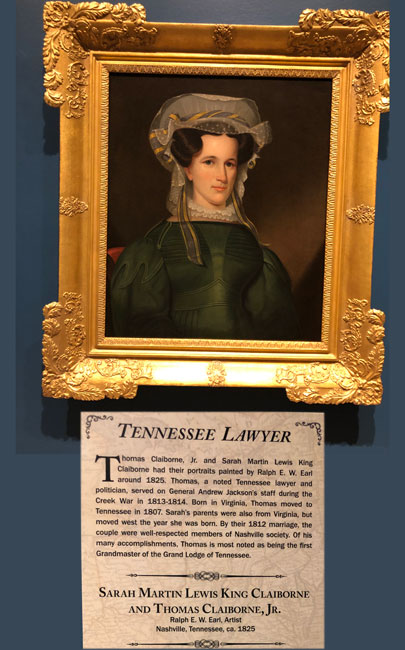
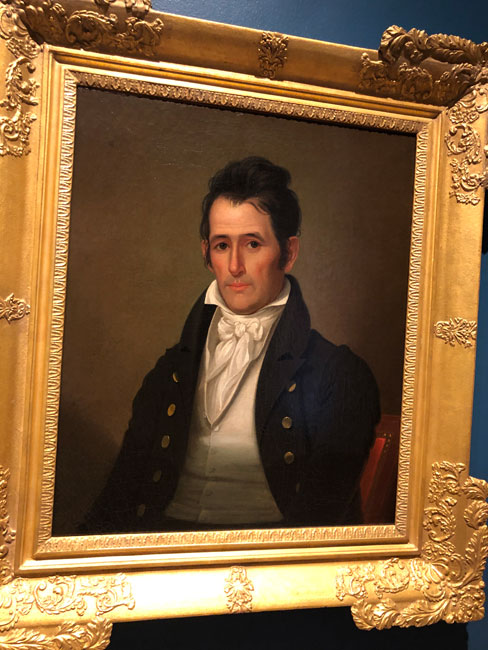
Thomas Claiborne
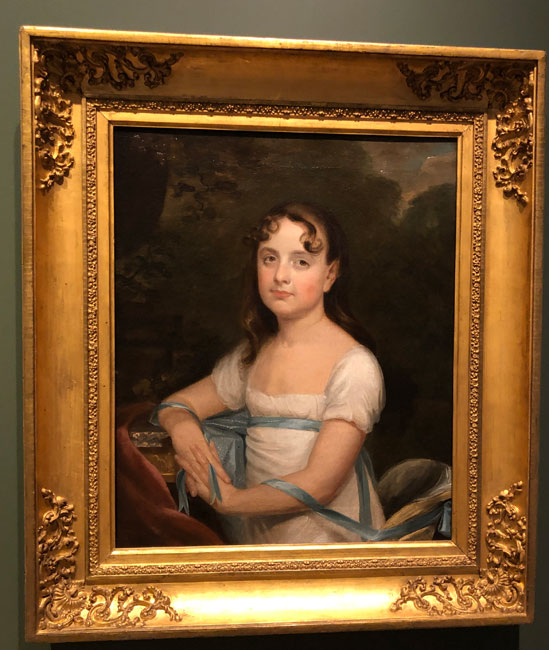
Elizabeth Sherlock, painted by Gilbert Stuart, who became famous for painting portraits of George Washington and other presidents
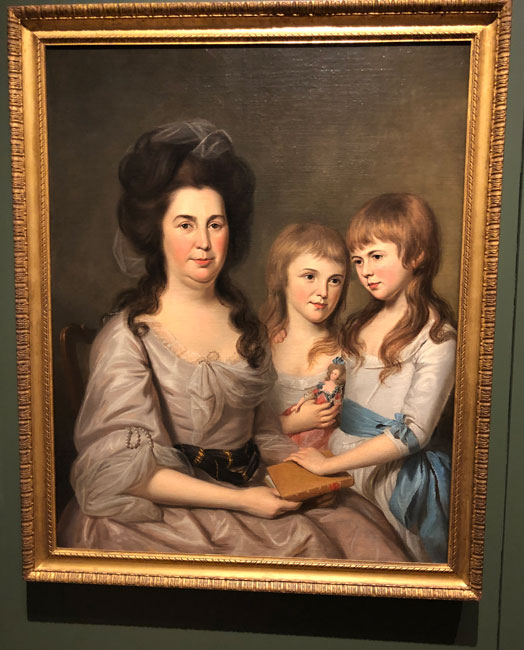
Elizabeth painted by Charles Willson Peale, 15 years earlier – I think she’s the one on the end

Among all these portraits of the rich and white, there was this – attempt to level the playing field? but I hardly think providing only this reproduction, and then writing on it, to boot, actually makes things any better.
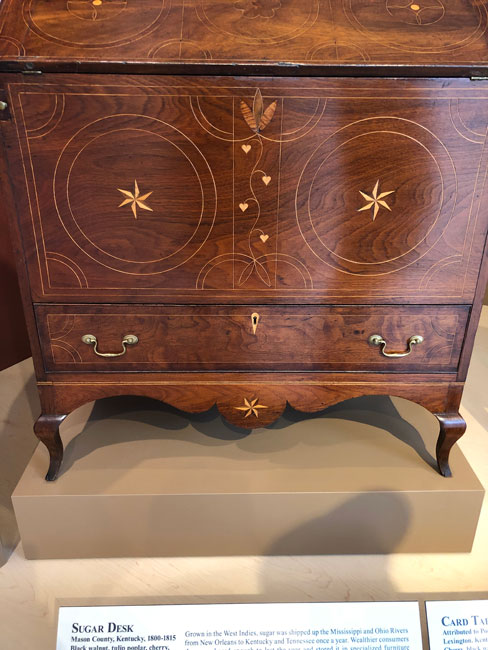
Sugar desk, because sugar was so expensive it was kept under lock & key, in beautiful furniture like this. So again, what was that about everyone in the 18th century was poor?

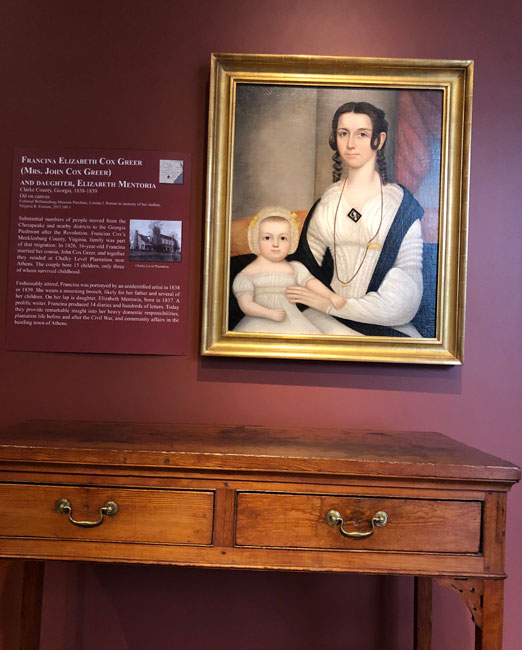
The portraits and furniture are at the DeWitt Wallace Decorative Arts Museum; next we went to the Abby Aldrich Rockefeller Folk Art Museum, with its own cultural issues and didactic labels. On our last morning we woke up in our canopy bed, and went for a guided walk through of the governor’s mansion, where I should’ve taken a picture of my favorite portrait in there, George III’s cornation portrait that looks just like he did in Hamilton. We waved goodbye to the cows, bought sandwiches, and drove back to the 21st century.
[portfolio_slideshow pagerpos=disabled]
